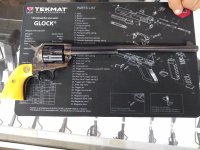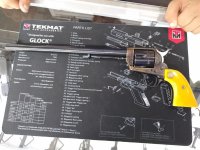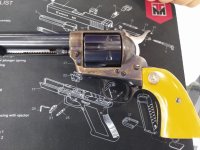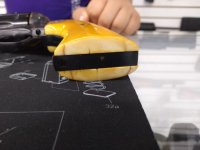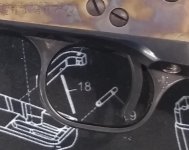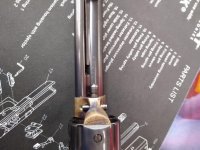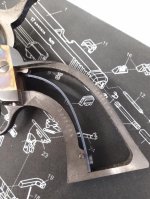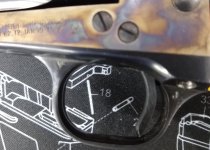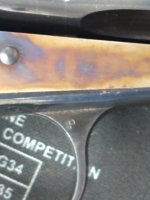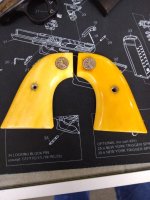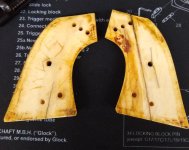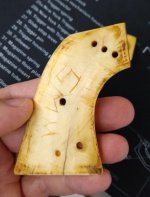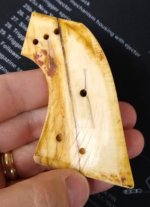Yes it does look like some dings in the bluing in your pic there.
The backstrap and TG screws do like to loosen up on the SAA when the guns are shot. Ruger had that problem too.
Maybe some marks from tightening the screw(s). Looks like scratches in the countersink of the screw hole in the triggerguard from a screwdriver blade as well.
I think it was Colt that used the very thin red nylon/plastic 'lock' washers on their action and frame screws to help avoid this. This was somewhere in the production of the 3rdgen I think.
Ruger may have used the same thing or perhaps the little nylon cross plug in the threads of the screws to help lock them in place.
FWIW,,the barrel on these (2ndGen Buntlines) should have a number stamped on the bottom separate from the guns ser#.
All had a prefix of 'BB' and the #'s started at 100
This was the 'Buntline Barrel' #
BB789 for example
This was done by Colt on the 2nd Generation Buntlines supposedly so the bbls' could not be removed and simply reinstalled on a 1st generation SAA creating a very rare 1stgen revolver.
I believe the Colt collectors community had something to do with this move, or so I have been told.
IIRC, just over 4000 2nd Gen Buntlines were mfg'rd.
...Plus if I recall correctly the Colt Service & Repair Dept. would sell a separate Buntline Bbl to a customer. Those 'repair bbls' would have a BB# as well.
Repair Bbl's Post WW2 generally have their address & caliber roll markings in different format and location on the bbl than the factory bbls used for orig assembly. So they are easy to spot.
If the gun is all orig finish and matching I think a $2500 price is on the high side of retail.
The grips MAY be Ivory,,if they are , that would be a big plus and could make up for some of what I see as over price for the gun.
I'm not sure the grips are orig to the gun, nor are they 'Colt' factory ivory,,so again the value of them as ivory grips has to be figured accordingly.
The fit of the grips doesn't look to be that precise in places as well.
Personally, with no box or papers and with the slight wear on the gun, I'd think a price of $1700 would be about right w/o the grips figured in.
Then the grips could be a take it or leave issue.
Take them at $xx if you really like then. Or leave them and search out a set of orig black Colt grips that likely came on the gun.
Orig grips would have been the black plastic checkered grips for that Model. But ivory could certainly have been special ordered it
Only a Letter would tell you what that gun left the factory with.
I think the front face of the cylinder should have the assembly or Batch number stamped on it. That same number should be on the inside surface of the loading gate. Usually a 3 digit#,,,it is separate and does not match the ser# (unless by some wild chance ).
The assembly number is also found on the bottom surface of the frame but you would have to take the trigger guard off to see it.
2nd generation gun should have the removeable cylinder bushing. Same as the 1stgen guns.
3rd gen guns went to a solid bushing/non-removeable.
The ratchet star design on the 3rdgen is different that the 1st/2nd gen guns as well and the 3rd uses a different style hand because of it.
The so-called 4th generation guns are simply 3rdgeneration guns that resumed the use of the removeable cylinder bushing.
4th Generation was never an official Colt Factory term.

